Matthew Scudder might not be a familiar to most of us, but to crime fiction obsessives, you might as well be talking about Batman or Superman. Over 35 years, the alcoholic NYPD cop turned private eye has featured in seventeen best-selling novels by genre master Lawrence Block. Though his sole big-screen appearance before now was in almost unrecognizable form, played by Jeff Bridges in Hal Ashby‘s famously disastrous final movie “8 Million Ways To Die,” Scudder may be about to hit the big time, as he hits multiplexes this Friday, embodied by Liam Neeson, in Scott Frank‘s “A Walk Among The Tombstones.”
Scudder’s walking a beat that many have gone down before. Taking literary detectives and putting them on screen is virtually as old as cinema itself, and movie sleuths have been among some of the medium’s most enduring characters. So, with “A Walk Among The Tombstones” hitting theaters, we’ve picked out a group (a gaggle? a murder?) of literary detectives, and run through their most memorable big-screen appearances. Take a look below, and let us know your favorites in the comments.
Philip Marlowe
Created by: Raymond Chandler
Best Known Film Appearance: Perhaps the most famous cinematic private eye is also, bar Sherlock
Holmes (who we kept out of this, having covered him elsewhere already), one of the most-filmed detectives in cinema
history. As such, we could have gone with his debut screen appearance, “The Falcon Takes Over” (an adaptation of “Farewell My Lovely,” later
filmed with Robert Mitchum), the seminal “The Big Sleep” with Humphrey Bogart or James Garner in 1969’s
“Marlowe.” But if you know us, you’ll know that we were always going to go for Robert Altman‘s outstanding 1973 adaptation of “The
Long Goodbye.” Written by “Empire Strikes Back” scribe Leigh Brackett (who also wrote “The Big Sleep”), the film moves Marlowe from
the 1940s to the (then) present day, with an adaptation that melds the noir cool of the original with Altman’s loosey-goosey energy. Elliot Gould, who plays
Marlowe, is few people’s immediate idea of Chandler’s legendary tough guy, but, like the film itself, proves a surprisingly good fit, a semi-bohemian slob who
nevertheless embodies the honorable qualities of the character. Both paying homage to and subtly tearing apart the noir genre, it’s stunningly shot by Vilmos Zsigmond,
deeply witty and remarkably involving. It’s one of Altman’s very best, and, from what we hear, a pretty good primer for this fall’s “Inherent
Vice,” from the director’s acolyte Paul Thomas Anderson.
Other Screen Appearances: Other than the ones above, there’s also 1942’s
“Time To Kill,” 1944’s “Murder, MY Sweet,” 1947’s “Lady In The Lake” and “The Brasher
Doubloon” and 1978’s “The Big Sleep” (with Robert Mitchum, rather than Bogie, in Michael Winner’s sub-par remake).
Sam Spade
Created By: Dashiell Hammett
Best Known Film Appearance: “The Maltese Falcon” (1941). The history of hard-boiled detective
fiction on the page is dominated by two names: Dashiell Hammett and Raymond Chandler. And, with appealing symmetry, both are analogous to their most famous respective
creations, Sam Spade and Philip Marlowe, with Hammett/Spade being the pioneer, the genre-definer, and Chandler/Marlowe being the refiner, bringing the form to arguably its highest
peak. The parallels continue on the screen, too, with both characters being most indelibly portrayed by Humphrey Bogart. This John Huston film, based on
Hammett’s only full-length Sam Spade novel, pretty much launched an entire genre—film noir.
“The Maltese Falcon,” amazingly Huston’s first directorial film, is still a classic in its own right, unfettered by as-yet-unformed generic conventions that
occasionally throttled later film noir to the point of airlessness. Here Mary Astor’s femme is a little less dragon-lady fatale, the plot a little more concerned with
coherent logic and the execution uncluttered and simple, where later iterations would lather on the style. Which gives the film, and Bogart’s tremendous Sam Spade, a textured
subtlety that has stood the test of time. Though Hammett would only write a couple more short stories featuring Spade, he knew he had created something new, saying “Spade has
no original. He is what most of the private detectives…would like to have been. For your private detective does want to be an erudite solver of riddles in the Sherlock Holmes
manner; he wants to be a hard and shifty fellow, able to take care of himself in any situation, able to get the best of anybody he comes in contact with, whether criminal, innocent
by-stander or client.” And Huston and Bogart (who did not physically resemble Spade at all) did such justice to that character onscreen that there’s a real sense that
half the films on this list would not exist without the terrific, tricksy “Maltese Falcon” to point the way.
Other Screen Appearances: “The Maltese
Falcon” was filmed twice before 1941, once starring Ricardo Cortez in a risque pre-Code 1931 version that was deemed too lewd for rerelease, and once as comedy
“Satan Met A Lady” starring Bette Davis, which flopped hard. Spade, despite his pioneer status, has not appeared in many films since, perhaps due to
the paucity of Hammett’s Spade stories. Most often, he’s shown up in spoofs. George Segal played Sammy Spade Jr. in the comedy sequel “The Black
Bird,” and Peter Falk played “Sam Diamond” in Neil Simon’s “Murder by Death.”
Dashiell Hammett
Created By: Wim Wenders, Ross Thomas, Dennis O’Flaherty
Best Known Film Appearance: Wim Wenders’ mostly
forgotten 1982 film “Hammett.” Unlike most of these detectives, famous author and hard-boiled detective novelist Dashiell Hammett was never the subject of his own
stories. But Hammett did work for the Pinkerton National Detective Agency before he became a writer (fictionalized in his books as the Continental Detective Agency). So Francis
Ford Coppola commissioned a fictionalized script through his American Zoetrope studios—purportedly founded to help auteurs outside the Hollywood machine—about
Hammett himself in his waning Detective days, hoping to get out and become a novelist (a little meta before people started defining the term). But the writer, looking to get
out, is too loyal to old friends and gets sucked back into the game for one last mystery. Coppola hired Wenders to direct, but had a heavy hand in the movie’s creation and
editing. Starring Frederic Forrest (perhaps best remembered as Chef in “Apocalypse Now“), Coppola was clearly betting the farm on the actor, but as
Coppola’s failed musical “One From The Heart” already demonstrated, Forrest wasn’t exactly leading man material and certainly never connected with
mass audiences. The authorship of “Hammett” is in serious doubt too, as Coppola reportedly threw out a lot of footage and reshot most of the film. Clear evidence to
support those stories isn’t there, aside from industry lore, but “Hammett” certainly does feel like an uneven film pulled in two directions. Plus, it has the
distinct look of being shot in Zoetrope Studios rather than on actual city streets (where some of the footage was originally shot) and therefore has a heightened artificial
feeling.
Other Screen Appearances: Several classic movies were made based on Hammett’s work, “The Maltese Falcon,” “The Thin
Man” and “The Glass Key” (all of them made at least twice, including John Huston’s ‘Falcon’ which was originally made in 1931),
but the author was rarely the subject of the movies himself. But he was portrayed as himself one other time on screen, by Jason Robards in Fred Zinnemann’s 1977
film “Julia” starring Jane Fonda and Vanessa Redgrave.
Miss Marple
Created By: Agatha Christie
Best Known Film Appearance: “The Mirror Crack’d” (1980). For anyone growing
up on the British Isles in the 1980s, veteran, now-deceased British actress Joan Hickson is Miss Marple, having starred in the BBC adaptations of 12 of the
books, and an aged-up, pre-“Murder She Wrote” Angela Lansbury just doesn’t cut the mustard. Still, this Guy Hamilton film, which itself seemed
to be a staple of regional TV Christmas programming for about twenty years, earns a fond place in our memory partly for being so much the American, glammed-up version of a very
British sensibility. In many ways, this film is of a type with the star-stuffed ‘70s Poirot adaptations mentioned below, with aesthetics more or less of the level of a TV
movie (vaseline-smeared lenses to conceal the wrinkles on the slumming stars’ faces), but “The Mirror Crack’d” is really quite the camp artifact, and no less
entertaining for it. Lansbury’s Marple is in fact perhaps the least memorable turn in a lineup that includes Elizabeth Taylor and Kim Novak playing—what else—catty rival
movie stars, Tony Curtis in his silver fox period, Rock Hudson in one of his final theatrical feature roles, Geraldine Chaplin as one of many obligatory red herrings and Edward Fox as the baffled police inspector who coincidentally
happens to be Marple’s nephew. Most surprisingly, however, Christie’s plot, which involves SPOILER ALERT a movie star murdering a fan who had unwittingly given
her measles leading to her child being born mentally disabled SPOILER ENDS was actually inspired by a real-life incident that happened to “Laura” actress
Gene Tierney, right down, according to Tierney’s autobiography, to the sudden stare that gives the book its Tennyson-inspired title. Though presumably not the actual
murder.
Other Screen Appearances: Aside from the definitive BBC adaptations, U.K. channel ITV got into the Marple game in the 1990s, putting Geraldine McEwan
and Julia McKenzie into the role. But on the big screen, prior to Lansbury’s turn, Miss Marple was essayed five times over by the formidable Margaret
Rutherford in “Murder She Said,” “Murder At The Gallop” (adapted from a Hercule Poirot story), “Murder Most Foul,”
“Murder Ahoy” and briefly in the spoof “The Alphabet Murders.” But Rutherford’s portrayal took significant liberties with the Marple of
the books, making Lansbury probably the more faithful big-screen incarnation. But seriously, Hickson FTW.
Arkady Renko
Created By: Martin Cruz Smith
Best Known Film Appearance: “Gorky Park” (1983). Based on the massively
best-selling 1981 detective story that transposed the classic “one good detective in a sea of corruption” plot to Soviet Moscow, and appearing in the middle of
Reagan-era Cold War tension, “Gorky Park” nevertheless doesn’t feel like it comes from the same era as jingo-nonsense like ‘Red Dawn”.
Instead, Michael Apted’s procedural, starring William Hurt as Arkady Renko, comes across more as the last of the murky ’70s conspiracy thrillers, in line
with “The Conversation” or “All the President’s Men,” it just happens to be about Brezhnevian, rather than Nixonian, corruption and
intrigue. The staging can be awkward at time and brings a few weird compromises—everyone talks in a
British accent, for no very obvious reason, and the Soviet authorities were uneasy to grant permits, so most of the “Moscow” you see is actually Helsinki—but it also makes you wonder how it is that “Gorky Park” can possibly be one of a tiny handful
of Western films actually set in Russia, when we all spent so many decades obsessing about the place. Hurt is compelling as Renko, upright and humane in a system that is everything
but, the son of a high-powered general refusing to take up the easy life of Party privilege. Apted, originator of the fascinating “Up” series, eventually sank to
doing a Bond film, “The World is Not Enough,” but this is a far more compelling thriller.
Other Screen Appearances: None, although there are now 7
more Renko novels, many dealing with the increasing chaos of Putin’s Russia. Someone should get on that.
Jack Reacher
Created By: Lee Child
Best Known Film
Appearance: “Jack Reacher” (2012). Ok, so Child’s Reacher is 6ft 5, 250 lbs, has blond hair, blue eyes, and Tom Cruise is 5ft 7, 150 lbs and has
brown hair and green eyes, but the fuss by fans of the Lee Child books over casting the biggest star in the world as their literary hero pointed to something deeper than the mere
differences in physical appearance. (After all, Humphrey Bogart, for example, looked completely different to the physical description of Sam Spade, and that didn’t stop
his iteration becoming definitive). Really it suggested that Cruise’s cachet had eroded to the point where fans were worried about his ability to do the tough, uncompromising
hard-ass side of the Reacher character justice, and there at least, they needn’t have worried. Christopher McQuarrie’s adaptation of Child’s novel
“One Shot” is by no means perfect, but its flaws—an underwritten female role for
Rosamund Pike, a criminally forgettable villain, considering he’s played by Werner Herzog—have nothing to do with Cruise’s Reacher, which is actually one of the best aspects of the film,
along with an endearingly grizzled role for Robert Duvall. Ok, fine, we’re not speaking as diehard fans of the books, but Cruise was taciturn and morally ambivalent
enough here to differentiate him from the actor’s more heroic roles, and he delivered the hardboiled, bitten-off, dry wit of the character with real assurance. So much so that
the news that Reacher, despite the first film’s relatively poor stateside showing, will return for a cinematic sequel (though without McQuarrie this time, who’ll be too
busy with another Cruise franchise in “Mission: Impossible 5”) is not wholly unwelcome. It’s possible that the film Reacher and the book Reacher are totally
different animals, but if they both do their job, then where’s the harm?
Other Screen Appearances: None so far, though all other 18 Reacher novels have been
optioned for film, and the imminent sequel is reportedly going to be based on the most recent entry, “Never Go Back.”
Nick and Nora Charles
Created By: Dashiell Hammett
Best Known Film Appearance: “The Thin Man” (1934). They’re far
less famous now than Sam Spade, but Hammett’s other great detective creation, Nick and Nora Charles, were hugely popular on screen in the R#8217;30s and ’40s,
and deserve appreciation for pulling off light-hearted detective work better than anyone else. 1934’s “The Thin Man” is sketched with some of the same noir-ish
visuals as “The Maltese Falcon,” but its tone is all its own, with some pretty nasty crime being casually investigated by the cheerfully alcoholic, happily
bickering socialites Nick (William Powell, who won an Oscar for the film) and Nora (Myrna Loy). Their charming and vicious pre-Code back-and-forth is snappier
and funnier than almost any other onscreen partners, whether spouses or detectives. It’s a shame the film takes almost half an hour to introduce them, but once it does, the
camera obviously can’t get enough of them, and neither can the viewer. Even when the convoluted plot becomes hard to follow, watching them bounce off each other is too much
fun. They’re more a screwball comedy couple investigating a crime almost by accident, but they did it so well, five sequels were produced, and the titular “thin
man”—actually the murder victim in the first film—came to refer to Powell’s character. None of the subsequent films were as strong as the original, but the
pair’s chemistry was so good that they’re all still enjoyable (Powell and Loy were widely, but wrongly, thought to be a real life couple). Sometimes called one of the
most influential depictions of detectives, it would actually be nice if Nick and Nora had more influence, instead of the sea of grim, dysfunctional sleuths we’re stuck
with today (all of whom Nick could merrily drink under the table).
Other Screen Appearances: “After the Thin Man” (1936), “Another Thin
Man” (1939), “Shadow of the Thin Man” (1941), “The Thin Man Goes Home” (1945), “Song of the Thin Man” (1947)
Hercule Poirot
Created By: Agatha Christie
Best Known Film Appearance: “Murder on the Orient Express” (1974).
Probably the most famous fictional detective ever created, with the exception of Mr. Not-Appearing-On-This-List from Baker Street, you can argue that Christie’s fastidious
inter-war Belgian has never been very well-served by the movies, appearing either in nonsensical comedy mutilations, like 1965’s “The Alphabet Murders”
(with Tony Randall as Poirot), or in the heavy-going series of ’70s and ’80s versions featuring Peter Ustinov (from 1978’s “Death on the
Nile” onward), in which grand location work and impressive casts only bog everything down. They’re TV movies with pretensions, and thereby not as good as the more
modest recent TV versions with David Suchet, who more than anyone else has become the Poirot. But there is one exception, 1974’s “Murder on the Orient
Express,” which gets off to a good start by adapting the best of the source material novels, and only gets better from there. The cast is breathtaking—Lauren Bacall, Ingrid Bergman, John Gielgud, Vanessa Redgrave, Sean Connery, Anthony Perkins and
Michael York are all suspects—and the crew just as heavyweight. Sidney Lumet
directs, with rich photography by Geoffrey Unsworth (“2001”, “Cabaret”) and editing from Anne Coates (“Lawrence of
Arabia”, “The Elephant Man”). More important than all those names put together, though, is Albert Finney as Poirot. Famous mostly as a
Shakespearean stage actor before “Murder,” he has since been completely identified with Poirot, even though he never played him again. Finney plays Poirot the way he
should be, without the slightest ridiculousness—he actually verges on frightening with his complete
implacability—and it’s a sight to see as the little man goes toe-to-toe with half a dozen
Hollywood legends and bests them all. It’s the rare detective film that’s as much fun to rewatch knowing whodunnit, just to see again the level of his performance—and because there’s no other way to see Finney as Hercule.
Other Screen Appearances:
More than a dozen, from 1932’s “Alibi” to 1988’s “Appointment with Death”, along with many, many TV adaptations.
Father Brown
Created by: G.K. Chesterton
Best Known Film Appearance: The great writer G.K. Chesterton converted to Catholicism in 1922, and
his faith infused his work throughout his career (for better or for worse: accusations of anti-Semitism dogged him, with some justification). Perhaps the most popular example of
that is his long-running creation, the crime-solving Catholic priest Father Brown, who featured in 51 stories, and uses reason and spiritual truths rather than scientific details, a
contrast to most detectives. Brown’s been brought to the screen a few times over the years, but most memorably in 1954’s “Father Brown,” a
Columbia-backed, but British made picture, directed by the great and undervalued helmer Robert Hamer, of “It Always Rains On Sunday” and
“Kind Hearts And Coronets” fame. Adapting, somewhat loosely, the first and best-known of the Brown tales, “The Blue Cross,” it sees the Father
(Alec Guinness) tasked with transporting a famous cross to Rome, only to be targeted by the famous thief Flambeau (Peter Finch). Chesterton’s creation is always
interesting because he’s not just trying to catch the criminal, he’s trying to redeem him, and while it sometimes feels overly preachy, Hamer’s film is smart and
serious about the religious implications while sustaining a light and bouncy tone. In large part part, thanks to an impeccable cast. Guinness is once again transformed, and proves a
perfect Brown, while Finch, in something of a breakout role, is hugely charismatic, and other British stalwarts like Bernard Lee, Joan Greenwood and Sid James are all
excellent too. These days, the film feels a little minor, but it’s also hugely enjoyable, and deserves greater recognition than it gets these days.
Other Screen
Appearances: “The Blue Cross” had been filmed once before, in 1934’s Hollywood production “Father Brown” starring Walter Connolly.
There were also two German films in the early 1960s starring Heinz Ruhmann, and a number of television versions, most recently a popular BBC take starring Mark
Williams (Ron Weasley’s dad in the ‘Harry Potter’ films).
Inspector Maigret
Created By: Georges Simenon
Best Known Film Appearance: Pipe-smoking, hard-drinking Parisian policeman Inspector
Maigret is one of the best-known crime-solvers around the world, though he’s never had a particularly high profile in the U.S., his many TV and film appearances mostly being
made, appropriately enough, in Europe. His sole real Hollywood appearance came with 1950’s “The Man On The Eiffel Tower,” a formulaic mystery that’s
more interesting because of the behind-the-scenes story than what’s on screen. Based on Simenon’s novel “A Man’s Head,” it sees Bill Kirby
(Robert Hutton) pay a medical student (Franchot Tone) to murder his wealthy aunt, framing a Parisian knife grinder (Burgess Meredith) in the process. Maigret
(Charles Laughton) is on the case, and soon rumbles the real plot, leading to a chase up the titular Parisian landmark. Shot in the low-rent Technicolor alternative
Ansco Color, it’s slightly ropey stuff, though the real Paris locales are atmospherically captured, and the final chase is pretty well done (there’s one shot of Tone
standing far above Paris atop the Tower, for real, that Tom Cruise‘s “Mission: Impossible” character would be proud of). Given the cast, the
performances are a little disappointing too. Laughton is miscast and showy as Maigret, while Meredith appears to be in a different movie, and only Tone (best known for
“Mutiny on the Bounty“) comes off very well. But it’s no wonder that the film proved a bit of a mess. Original director Irving Allen was fired early
on, and to keep the film alive, Laughton encouraged Meredith to take over, with Tone directing the scenes in which Meredith had to act, and Laughton helming the ones featuring both
Meredith and Tone. As such, it’s the only other film on which Laughton stepped behind the camera other than his astonishing “The Night Of The Hunter” a few
years later. It’s more of an interesting footnote than anything else, though, as little of the promise of that movie can be found in the direction here.
Other Screen
Appearances: Maigret’s generally been a small-screen character, aside from this and a few films starring French star Jean Gabin, as well as several Soviet-era
pictures. Bruno Cremer played the character in a long-running French series, while Gino Cervi was an Italian take, Kinya Aikawa played a Japanese
take, and Rupert Davies, Richard Harris and Michael Gambon both starred in British productions.
V.I. Warshawski
Created By: Sara Paretsky
Best Known Film Appearance: Tough, but occasionally soft-hearted Chicago P.I. V.I.
Warshawski is a figure beloved by crime fiction fans, and especially notable as one of the rare female leads in the hard-boiled genre. But few were likely to have been happy with
her 1991 screen appearance, also titled “V.I. Warshawski.” Intended as a franchise-starter for Kathleen Turner, the film adapts Paretsky’s second
novel, “Deadlock,” which sees the detective investigate the death of a hockey player who supposedly died in an accident. But it takes a number of liberties,
including bumping up the role of the victim’s teenage daughter (Angela Goethals from “Home Alone“), and most crucially, changing the tone from
hard-boiled noir to knockabout action-comedy, and Paretsky more or less condemned the film once it was finished. “Revenge Of The Nerds” helmer Jeff Kanew
probably wasn’t the best choice for something like this, and there’s a sneering sense of male superiority to the whole thing, with most of the jokes revolving around
Warshawski being a woman in a man’s world, rather than being a smart, capable ass-kicker in her own right. It’s also pretty anonymous as far as similar thrillers go,
interchangeable with the thousand other films in this genre released in the late ’80s and early ’90s. Which is all a shame, as Turner’s actually perfect casting as
the character: intimidating, vulnerable, hard as nails, and drily funny. It didn’t matter though, because the film flopped and the franchise ended as soon as it began.
Other Screen Appearances: None, as of now, though Turner did reprise the role in two BBC Radio dramas. Brie Larson-starring reboot, anyone?
Easy Rawlins
Created By: Walter Moseley
Best Known Film Appearance: Moseley’s WWII veteran and private-eye Ezekiel “Easy”
Rawlins has always stood out in the crime fiction world. Spanning thirteen novels (the latest published this year) and nearly twenty years of L.A. history, he’s one of the few
African-American leads in the genre, and Mosley is expert at melding truly compelling mysteries with socio-political background. Easy got a fitting screen debut with 1995’s
“Devil In A Blue Dress.” Written and directed by Carl Franklin, it starts with Rawlins (Denzel Washington) unemployed and desperate for cash when a
mysterious man (Tom Sizemore) asks him to find the missing girlfriend (Jennifer Beals) of a mayoral candidate (Terry Kinney), a quest that inevitably leads to a
complex conspiracy and a string of dead bodies. It’s hard to imagine more appropriate casting as Rawlins than Washington, who carries an effortless private eye cool that Bogie
would be proud of. The rest of the cast (bar perhaps a bland Beals) are strong too, particularly Don Cheadle in an explosive, career-making turn as Easy’s psychopathic
sidekick Mouse. In general, the film, along with “L.A. Confidential,” is one of only a few truly successful post-“Chinatown” neo-noirs.
Franklin lovingly recreates the period and shoots the film in an unfussy, classical style, and Moseley’s story, by examining society’s attitude towards racial matters at
the time, finds a substance that’s not always present in the genre. The photography, by Jonathan Demme regular Tak Fujimoto, is excellent too.
Other
Screen Appearances: In a just world, this would have launched an Easy Rawlins franchise, but the film was a financial disaster, taking only $16 million, and the character
hasn’t been seen on screen since. NBC started developing a TV version written by Mosley and produced by “August Osage County” director John
Wells, but nothing ever came of it (possibly a good thing, as Easy would be better suited to cable anyway).
Mike Hammer
Created By: Mickey Spillane
Best Known Film Appearance: True to his name, Mickey Spillane‘s best known creation,
Mike Hammer, was a far cry from the debonair, charming private eyes elsewhere in the genre—he’s a brutal, blunt weapon and stone cold killer. And appropriately,
he’s the center of one of the chilliest, most nihilistic and brilliant films of the noir era, “Kiss Me Deadly.” Based on Spillane’s sixth Hammer
novel, it stars Ralph Meeker as the P.I. who picks up young woman newly escaped from a mental asylum (Cloris Leachman, in her debut film role), only to see her
brutally murdered because of her connection to a mysterious, hot-to-the-touch box. The film, directed by Robert Aldrich, isn’t so much hard-boiled as deep-fried,
drenched in gorgeous chiaroscuro and Cold War paranoia, and it’s the latter that sets the film apart from other noir films—the box turns out to be some sinister nuclear
material, culminating in an apocalyptic ending that’s virtually unheard of for the genre. It’s an odd, off-kilter picture, harsh and spare, and Meeker (who, apart from
this, is best known for Kubrick’s “Paths Of Glory“) is the perfect fit for it. To call him charmless sounds like an insult, but it’s far from it.
He’s Mike Hammer through and through, playing the P.I. as about 80% neck, and not giving anything even close to a shit about what you think of him. No surprise, then, that the
film drew heat from the Production Code Association, and even the Kefauver Commission into organized crime. Mostly ignored on release, it become a favorite of the Cahiers du Cinema
crowd, and its influence stretches as far as David Lynch and Quentin Tarantino, whose glowing briefcase in “Pulp Fiction” is a direct nod to the
film.
Other Screen Appearances: Hammer first appeared on screen two years before, in the guise of Biff Elliot in 3D noir “I, The Jury” (remade
in 1982 starring Armand Assante). That film was followed by “My Gun Is Quick,” starring Robert Bray, in 1957, before, curiously, Spillane himself
played Hammer in 1963’s “The Girl Hunters.” Other than that, the role was popularized by Stacy Keach, who played Hammer in various TV appearances
between 1984 and 1998 (a previous version, which ran from 1958 to 1960, starred Darren McGavin).
Feluda
Created By: Satyajit Ray
Best Known Film Appearance: He’s known best to most as a filmmaker, particularly with
regards to his Apu Trilogy of the 1950s, sometimes named among the finest films ever made, but Satyajit Ray was something of a polymath, with sidelines as a calligrapher, film
critic, and as a fiction writer, generally of works for children. Perhaps his most beloved creation, however, is Feluda (or Pradosh Chandra Mitra), a conscious tribute to Sherlock
Holmes, a brilliant Bengali private detective and martial arts expert accompanied by his loyal cousin and Watson surrogate Topshe, and sometimes by thriller writer Jatayu. Feluda
appeared in seventeen novels by Ray, and several other short stories, and the director made two movies of his own books, the most notable of which is 1974’s “The
Golden Fortress.” The film stars regular Ray collaborator Soumitra Chattarjee as the detective, who is hired to protect a six-year-old boy, who seems to have
memories of a past life, from kidnapping by those who seek the treasures he dreams of. Those who think of Ray as an intimidating arthouse figure of social realism will be surprised
by “The Golden Fortress”—it’s a rollicking adventure full of real spectacle, pacy,
light and funny but with real stakes too. But it skews young, more Tintin than Philip Marlowe. There’s a real sense of wonder and charm to the proceedings, enough so that it
feels Spielbergian before Spielberg was even a force. Sadly difficult to get hold of these days, it’s more than worth tracking down if you can, not least for
Chattarjee’s lovely turn as the hero.
Other Screen Appearances: Ray followed the film up with 1979’s “The Elephant God,” also starring
Chatterjee, but decided not to make more after the death of Jatayu actor Santosh Dutta. The director’s son, Sandip Ray, has since made five more movies,
between 2003 and 2011, with Sabyasachi Chakrabarty in the lead role, before rebooting this year with “The Emperor’s Ring,” starring Abir
Chattarjee. There have also been a number of television films, and even an animated series airing on the Disney Channel in India.
Nancy Drew
Created By: Edward Stratemeyer (ghostwritten by multiple authors under pseudonym Carolyn Keene)
Best Known Film
Appearance: “Nancy Drew” (2007) With a character that is essentially the literary equivalent of a manufactured pop act, whose personality has changed greatly
in the decades since she was first synthesized to reflect prevailing social attitudes, it’s hard to get too up in arms about any adaptation’s fidelity to the source
material. And to be fair, writer/director Andrew Fleming (also behind the damn good time that is “The Craft” and the bafflingly inept
“Dick”) along with co-writer Tiffany Paulsen, tries to inject a little knowingness into this big-screen outing for the plucky, resourceful, yet deeply
old-fashioned girl sleuth. At times, it almost works, as Nancy (Emma Roberts) is portrayed as a small-town girl in LA (it appears her particular small town is not just in a
“flyover state” but is also trapped in the 1950s, right down to its fashions and painfully chaste romances), whose goody-two-shoes perkiness and resilience are treated
almost satirically at times. But not quite, as the film stops just short of the kind of meta “Brady Bunch Movie” treatment that could have made it genuinely
subversive and fresh, and ends up trying to have its cutesy cupcake and eat it too. Support and cameos from Bruce Willis, Adam Goldberg, Rachael Leigh Cook and Tate
Donovan liven things up a little, but it’s a film that knows it can’t sincerely sell the wholesomeness that was the original character’s guiding principle, and
it can’t quite bring itself to reinvent Nancy for the 2000s either. It’s no real wonder it failed to find an audience and the potential franchise stalled out.
Other Screen Appearances: Way back in the 1930s, the character was played four times over in four WB movies by former child actress Bonita Granville, though
in these films Nancy is less mature than in the books, with the mystery elements often taking a backseat to her budding romance with Ned (renamed Ted for “modernization”
purposes!). There have been five attempts to launch a TV series, none lasting longer than two years, and the most recent, 2002’s “Nancy Drew” pilot with Maggie
Lawson in the title role, never got picked up at all.
Clarice Starling
Created By: Thomas Harris
Best Known Film Appearance: Well, “The Silence Of The Lambs,” of course. With
Will Graham left traumatized and disfigured after the events of “Red Dragon,” Thomas Harris needed a new quarry for his cannibalistic serial killer
Hannibal Lecter, and it came in the form of twentysomething FBI trainee Clarice Starling, played to Oscar-winning effect by Jodie Foster in Jonathan
Demme‘s 1991 adaptation. After a troubled childhood, Starling studied psychology and criminology before becoming the proverbial lamb to the slaughter to Lecter (Anthony
Hopkins) in an attempt to get the murderer to track down another serial killer, Buffalo Bill (Ted Levine). It’s perhaps a stretch to call Starling a detective as
such, but she does do her fair share of deducing, even if it’s mostly an accident that she stumbles across the killer, and the psychological back-and-forth between Foster and
Hopkins is the absolute heart of the film, even if it takes up relatively little screen time. It’s not the kind of role that usually wins Oscars, but it’s a testament to
Foster’s skills that it did, as she’s both out of her depth and wise beyond her years, and more than a match for the demonic men that she goes up against. Indeed,
despite being nearly a quarter-of-a-century old, Demme’s excellent thriller remains a model for beautifully-drawn, complex female leads. If only more had taken from its
example…
Other Screen Appearances: A sequel, Ridley Scott‘s “Hannibal,” arrived on screens a decade later, but Foster declined to
reprise the role of Starling, because, like the rest of us, she found the plot ridiculous. Julianne Moore took over, to decidedly lesser effect. TV
“Hannibal” showrunner Bryan Fuller hopes to introduce Starling to the show at some point, but the character is owned by MGM, rather than the
show’s backers Gaumont, so it may not be feasible (Anna Chlumsky‘s already played a decidedly Starling-esque FBI trainee on the show, though).
Honorable Mentions: Again, we decided that Sherlock Holmes is essentially a genre onto himself, but we looked at the history of the character in this feature here. Other famous literary sleuths who’ve cropped up on screen include Dick Tracy in Warren Beatty‘s 1991 film of the same name; Herge‘s Tintin in Steven Spielberg‘s “The Adventures Of Tintin” (2011); detective/monk William Of Baskerville, played by Sean Connery in “The Name Of The Rose” (1986), who’s only the focus of one book, or we might have included him; C. Auguste Dupin, protagonist of Poe’s “Murders In The Rue Morgue” (filmed in 1932); Chinese-American detective Charlie Chan (star of countless serials and films); and Travis McGee (played by Rod Taylor in 1970’s “Darker Than Amber,” but potentially soon to team Christian Bale and James Mangold)
Besides them, there’s also Lew Archer, played by Paul Newman beginning with “Harper” in 1966. We’d have included John Shaft, but he began in movies played by RIchard Roundtree rather than the literary world. We didn’t include Precious Ramotswe, heroine of Anthony Minghella‘s “The No. 1 Ladies Detectives Agency,” because the film was made for HBO rather than for the movies, and we deemed Simon Templar, aka The Saint, and Modesty Blaise to be not quite detectives. Anyone else we’ve missed? Let us know in the comments.
–Oli Lyttelton, Jessica Kiang, Ben Brock & Rodrigo Perez
Sign Up: Stay on top of the latest breaking film and TV news! Sign up for our Email Newsletters here.
 url: '',
target: '_blank', // default is _self, which opens in the same window (_blank in new window)
описание: ' варианты своего следующего фильма или драмы. .'
url: '',
target: '_blank', // default is _self, which opens in the same window (_blank in new window)
описание: ' варианты своего следующего фильма или драмы. .'
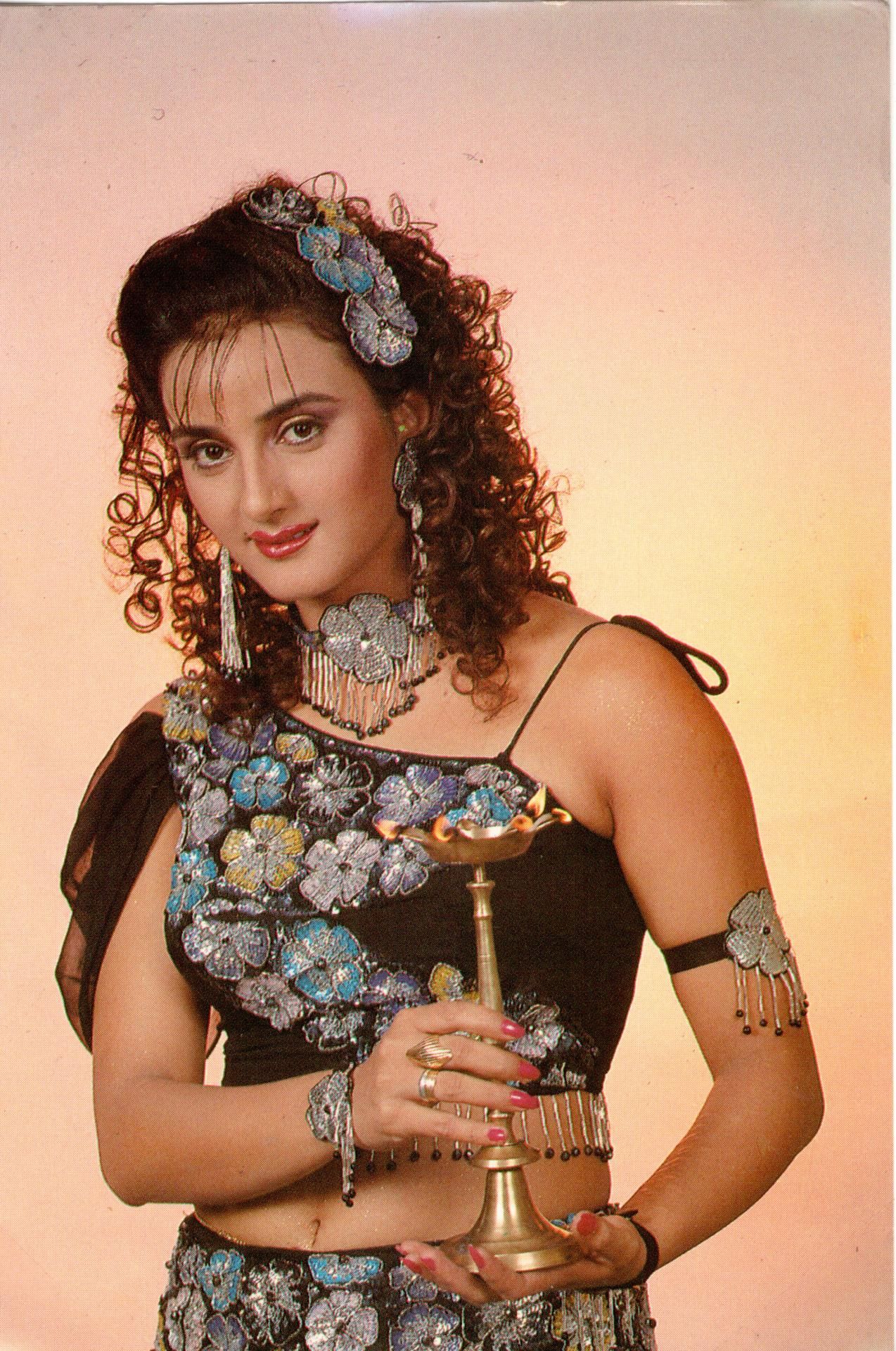 url: 'http://en.wikipedia.org/wiki/Red_telephone_box',
описание: 'The red telephone box is a familiar sight on the streets of the United Kingdom.'
url: 'http://en.wikipedia.org/wiki/Red_telephone_box',
описание: 'The red telephone box is a familiar sight on the streets of the United Kingdom.'
 описание: '',
описание: '',
 url: 'http://en.wikipedia.org/wiki/Autumn',
описание: ' варианты.'
url: 'http://en.wikipedia.org/wiki/Autumn',
описание: ' варианты.'
 описание: '',
описание: '',
 описание: '',
описание: '',
 описание: '',
описание: '',
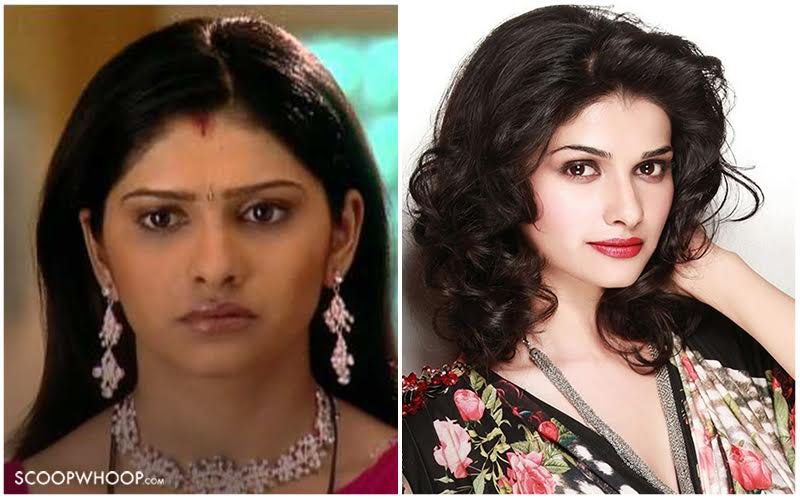 описание: '',
описание: '',
 описание: '',
описание: '',
 описание: '',
описание: '',
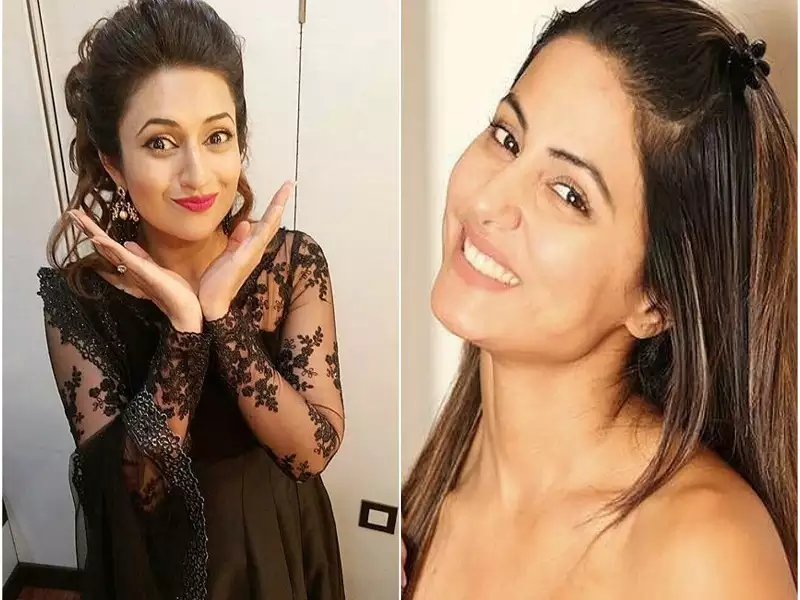 url: 'http://en.wikipedia.org/wiki/Autumn',
описание: ' варианты.'
url: 'http://en.wikipedia.org/wiki/Autumn',
описание: ' варианты.'
 описание: '',
описание: '',
 описание: '',
описание: '',
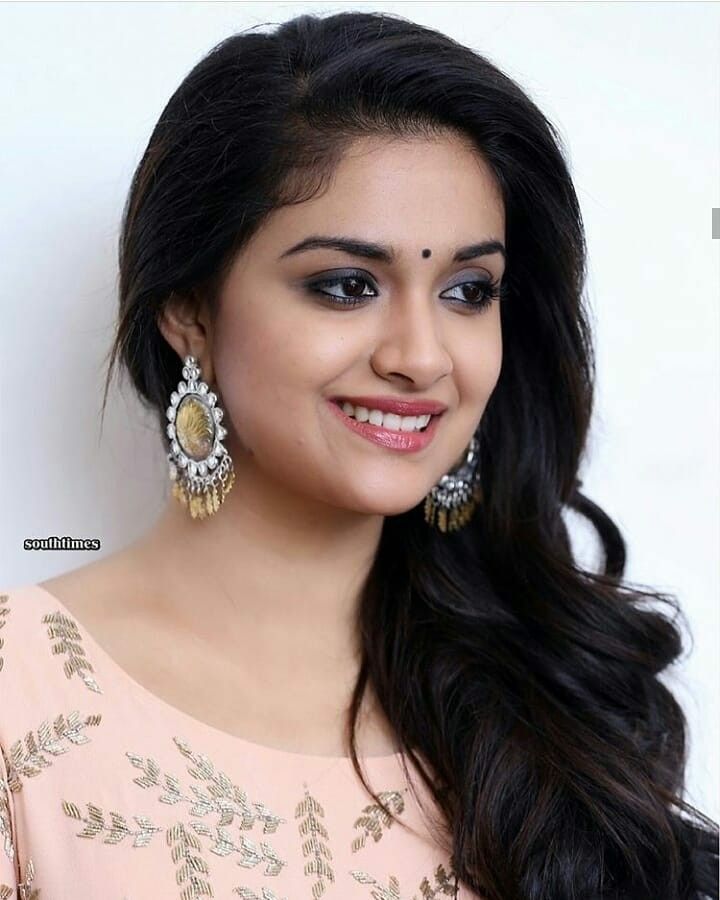 url: 'http://en.wikipedia.org/wiki/Autumn',
описание: ' варианты.'
url: 'http://en.wikipedia.org/wiki/Autumn',
описание: ' варианты.'
 описание: '',
описание: '',
 описание: '',
описание: '',
 описание: '',
описание: '',
 описание: '',
описание: '',
 описание: '',
описание: '',
 описание: '',
описание: '',
 url: 'http://en.wikipedia.org/wiki/Autumn',
описание: ' варианты.'
url: 'http://en.wikipedia.org/wiki/Autumn',
описание: ' варианты.'
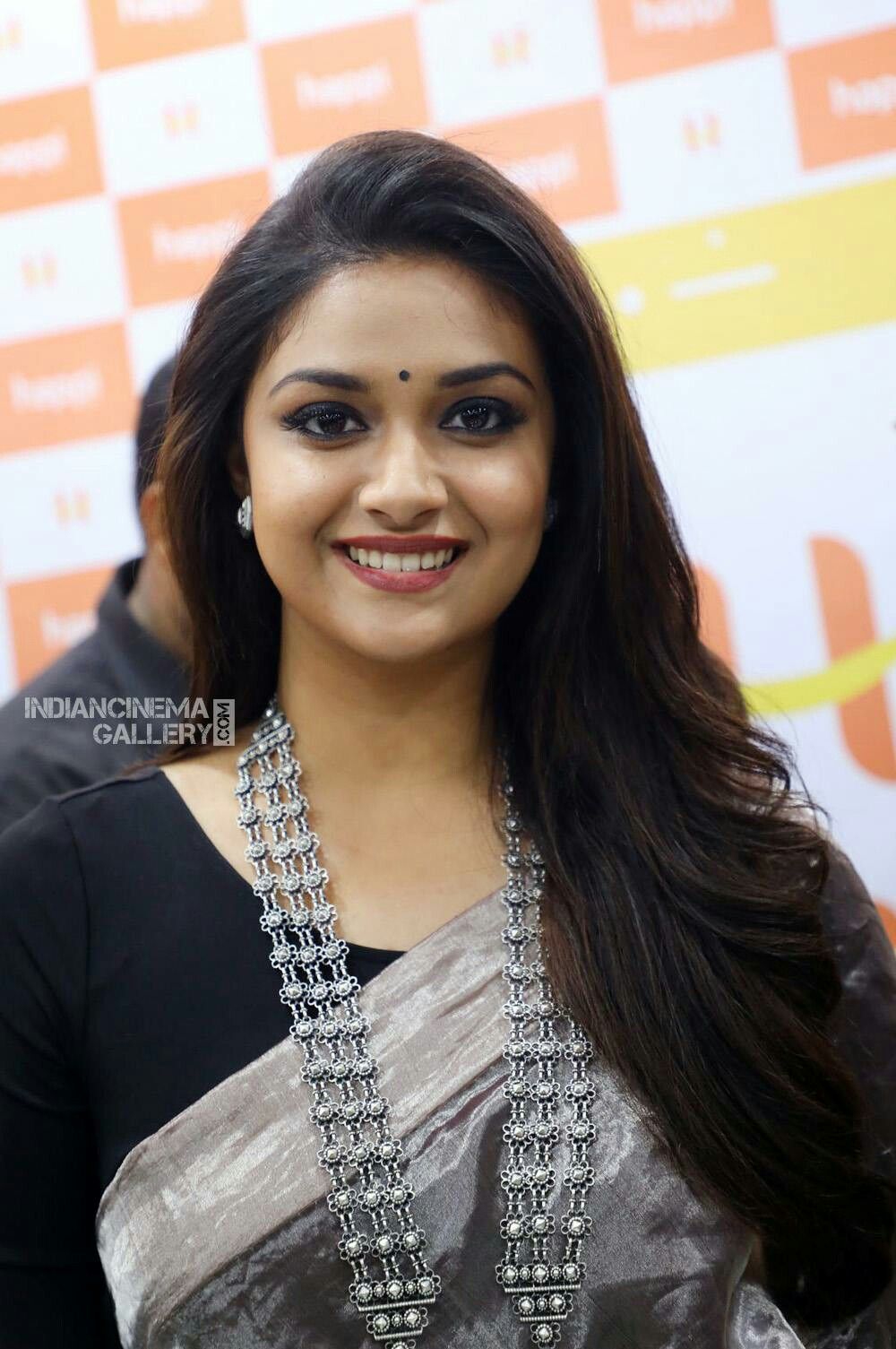 описание: '',
описание: '',
 описание: '',
описание: '',
 url: 'http://en.wikipedia.org/wiki/Autumn',
описание: ' варианты.'
url: 'http://en.wikipedia.org/wiki/Autumn',
описание: ' варианты.'
 описание: '',
описание: '',
 описание: '',
описание: '',
 описание: '',
описание: '',
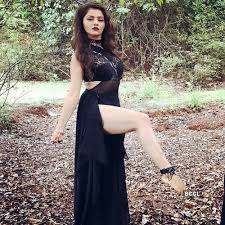 описание: '',
описание: '',
 описание: '',
описание: '',
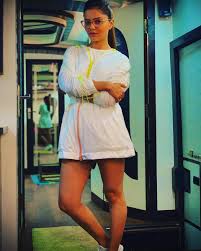 описание: '',
описание: '',
 url: 'http://en.wikipedia.org/wiki/Autumn',
описание: ' варианты.'
url: 'http://en.wikipedia.org/wiki/Autumn',
описание: ' варианты.'
 описание: '',
описание: '',
 описание: '',
описание: '',
 url: 'http://en.wikipedia.org/wiki/Autumn',
описание: ' варианты.'
url: 'http://en.wikipedia.org/wiki/Autumn',
описание: ' варианты.'
 описание: '',
описание: '',
 описание: '',
описание: '',
 описание: '',
описание: '',
 описание: '',
описание: '',
 описание: '',
описание: '',
 описание: '',
описание: '',
 url: 'http://en.wikipedia.org/wiki/Autumn',
описание: ' варианты.'
url: 'http://en.wikipedia.org/wiki/Autumn',
описание: ' варианты.'
 описание: '',
описание: '',
 описание: '',
описание: '',
 url: 'http://en.wikipedia.org/wiki/Autumn',
описание: ' варианты.'
url: 'http://en.wikipedia.org/wiki/Autumn',
описание: ' варианты.'
 описание: '',
описание: '',
 описание: '',
описание: '',
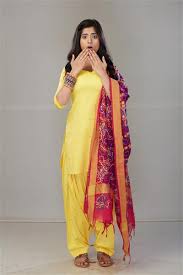 описание: '',
описание: '',
 описание: '',
описание: '',
 описание: '',
описание: '',
 описание: '',
описание: '',
 url: 'http://en.wikipedia.org/wiki/Autumn',
описание: ' варианты.'
url: 'http://en.wikipedia.org/wiki/Autumn',
описание: ' варианты.'
 описание: '',
описание: '',
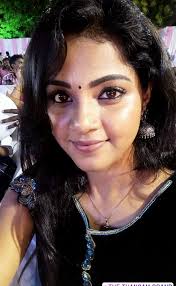 описание: '',
описание: '',
 url: 'http://en.wikipedia.org/wiki/Autumn',
описание: ' варианты.'
url: 'http://en.wikipedia.org/wiki/Autumn',
описание: ' варианты.'
 описание: '',
описание: '',
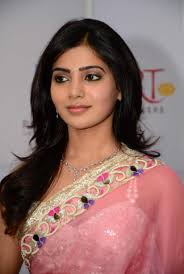 описание: '',
описание: '',
 описание: '',
описание: '',
 описание: '',
описание: '',
 описание: '',
описание: '',
 описание: '',
описание: '',
 описание: '',
описание: '',
 описание: '',
описание: '',
 url: 'http://en.wikipedia.org/wiki/Autumn',
описание: ' варианты.'
url: 'http://en.wikipedia.org/wiki/Autumn',
описание: ' варианты.'
 описание: '',
описание: '',
 описание: '',
описание: '',
 описание: '',
описание: '',
 описание: '',
описание: '',
 описание: '',
описание: '',
 описание: '',
описание: '',
 описание: '',
описание: '',

